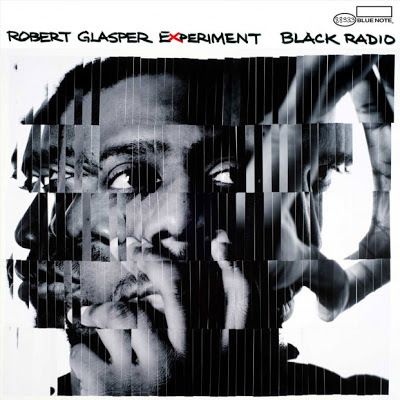Liberating 'Black Radio': The Robert Glasper Experiment

Liberating 'Black Radio': The Robert Glasper Experiment by Mark Anthony Neal | NewBlackMan
Asa medium, Black Radio was historically critical to the Black freedomstruggle. The infusion of Blackthought and musical expression onto the radio airwaves, particularly afterMemphis's WDIA, broke the color barrier and began programming Black music 24-7.In this sense Black Radio literally helped shape decades of American cultureand politics, whether it was Robert Williams, in exile, programming his "Radio Free Dixie" show from Havana, Cuba in the early1960s, young White kids consuming Ruth Brown, Big Mama Thornton, or LittleWillie John as if it was contraband, or Black owned radio stations opening upits studios to the Civil Rights movement. In its most classic forms, Black Radio, was charged with expanding theminds and listening taste of its core audiences, recalling WBLS' well knownadage (circa 1972) that it was "The Total Black Experience in Sound."
Onewould be hard-pressed to think of contemporary Black radio in such a context,even with an entity like Radio One and personalities like Michael Baisden andTom Joyner achieving unprecedented national visibility. Nearly two decades ago, The FamilyStand more aptly described Black radio as "plantation radio" or "Knee-grow"radio as Soul-Patrol co-founder Bob Davis often describes mainstream Blackmedia. Indeed Public Enemy even gave instructions on "How to Kill a RadioConsultant." Thus it is hard not to think of pianist Robert Glasper'scompelling new recording Black Radio (with the Robert Glasper Experiment) as anything other than a majorintervention.
Growingup in New York City, I was fortunate to be exposed to legendary radio jockssuch as HalJackson, Vaughn Harper, Vy Higginson, Jerry Bledsoe, ChuckLeonard, Lamar Renee and Frankie Crocker. Ididn't just tune in to listen to music, but the radio—Black radio—served as alearning lab; Their playlists served as the very foundation for, not only mylove of music, but my vocation as a scholar and critic of Black music. I imagine that Robert Glasper mighthave similar memories of Black radio.
Thegenius of Glasper's new recording is its willingness to expand the range ofwhat we consider Black music and what Black radio might consider as appropriatefor Black or so-called "Urban" audiences. Thus Glasper's decision to cover tracks as wide-ranging as Nirvana's"Smells Like Teen Spirit" (with auto-tune in tow), Mongo Santamaria's "Afro Blue" (with lyrics from OscarBrown, Jr.), Sade's "Cherish the Day" and John Coltrane's "A Love Supreme," isnot as far-fetched as it seems; These are the sounds of a CosmopolitanBlackness, that Black radio, and Black artists, particularly given theirtravels, have historically been on the cutting edge of. Equally cosmopolitan isGlasper's collection of collaborators.
Thoughmost well known as a jazz pianist, Glasper has long frayed the edges of thepristine space that "serious" Jazz currently inhabits in the Americanimagination. Like his invocationof Black Radio, the project is areminder Jazz was once a popular form within Black communities—listened to alongsideMotown, Doo-Wop, and southern Soul in ways that rarely raised an eyebrow. Glasper is part of a nearly twogeneration effort—think about the work Greg Osby, Steve Coleman, the late Keith"Guru" Elam and Branford Marsalis (Buckshot LeFonque)—to re-introduce Jazz as avital popular sound, and not as a museum art that is neither accessible oraffordable to the very communities responsible for its creation (not naming nonames…Wynton).
Likehis older Texas peer trumpeter Roy Hargrove, Glasper likely had little choicebut to hear the burgeoning rhythms of Hip-hop, and has sought to cultivatecreative spaces that acknowledge such influence. Glasper have done so on all of his major label releases,including 2009's Double-Booked, whichwas premised on the idea that Glasper's trio was booked to perform at a clubwith Terence Blanchard, at the same time that Ahmir "?uestlove" Thompson wantedthe Robert Glasper Experiment to jam with The Roots. Black Radio is the first Glasperrecording that grounds his music in an expansive context of contemporaryR&B and Hip-hop, as opposed to bringing those genres into a moretraditional jazz context
ErykahBadu, sounds perfectly at home singing "Afro-Blue," much the way Dianne Reeveswas when she recordedit twenty years ago, and Abbey Lincoln was more than fifty years ago when she recorded those originalOscar Brown, Jr. lyrics. The stillunderrated and vastly overlooked Stokely Williams, long-time lead of MintCondition, shines on the trippy "Why Do We Try." The inclusion of Williams also highlight's Glasper's desireto work with artists, generally in high regard for their artistry—like Lalah Hathaway and Meshell Ndegeocello—but who are often not afforded thesame level of visibility as some of their more traditional R&B peers. To this point, both Hathaway andNdegeocello released exceptional recordings last year, Where It All Begins and Weatherrespectively, that were largely ignored by so-called Black Radio.
Glasper'slongtime collaborator Bilal Oliver, shows up on two tracks "Letter to Hermione"and the affecting "Always Shine," which also features Lupe Fiasco. As Glasper recently told the New YorkTimes, he takes great pride in the fact that he was in the studio when the lateJames Yancey—J-Dilla—created the track "Reminisce" from Oliver's stellar debut First BornSecond .
Thetitle track, featuring Yasiin Bey (the rebranded Mos Def) speaks volumes aboutGlasper's intents to pursue what some might call, "post-genre" Black music; aterm that would strike older listeners as an oxymoron. Indeed scholar and musician GuthrieRamsey, whose own release The Colored Waiting Room shares Glasper's "post-genre" sensibilities, perhaps sums up the project best, writingthat Black Radio "plays with sonic,social, and iconic symbols in a way that recalibrates calcified, boring ideasabout genre and turns them on their head, all with a good sense of funkyadventure."
***
Mark Anthony Neal is the author of five books including theforthcoming Looking for Leroy:(Il)Legible Black Masculinities (New York University Press) and Professorof African & African-American Studies at Duke University. He is founder andmanaging editor of NewBlackMan andhost of the weekly webcast Left of Black . Follow him onTwitter @NewBlackMan.[image error]
Published on March 06, 2012 17:07
No comments have been added yet.
Mark Anthony Neal's Blog
- Mark Anthony Neal's profile
- 30 followers
Mark Anthony Neal isn't a Goodreads Author
(yet),
but they
do have a blog,
so here are some recent posts imported from
their feed.



